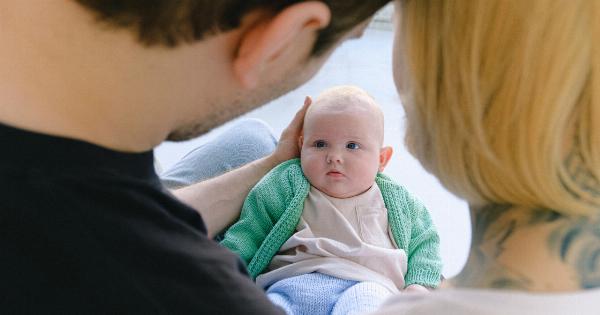Sudden Infant Death Syndrome (SIDS) is the unexpected death of an infant under the age of one that remains unexplained after a thorough investigation. It causes a lot of worries for parents and caregivers of infants.
There is no known way to predict which infant will fall prey to SIDS, but several steps can be taken to reduce the likelihood of an untimely death. Here are ten recommended steps to take to lower the risk of SIDS and ensure your baby’s safety.
Step 1: Safe Sleep Practices
Place your infant on their back to sleep. This should be done for every nap and nighttime, unless your pediatrician recommends otherwise. Moreover, the baby should sleep in his/her own crib, bassinet, or pack and play.
Additionally, using soft foam mattress overlays, bumper pads, blankets, loose bedding, and soft toys should be avoided. These things can be suffocating to a very young infant. Therefore, make sure the sleep area is devoid of them. However, as babies grow and are more able to turn over on their own, it is okay to have other objects in their bed with them.
Step 2: Avoid Excessive Heat and Overheating
Overheating is a known risk factor for SIDS. Dress your infant for sleep in lightweight garments. Keep the room where your baby sleeps at a temperature that is comfortable for an adult.
Keep all heat sources such as space heaters, radiators, and wood stoves away from the baby’s sleeping area. Additionally, ensure that the baby’s head remains uncovered while asleep and keep the room well ventilated.
Step 3: Avoid Second-Hand Smoke
One of the leading causes of SIDS is exposure to second-hand smoke. Infants who inhale cigarette smoke, either while in utero or after birth, are prone to higher incidences of SIDS.
Therefore, it is best to avoid smoking around your baby, or better yet, quit smoking altogether. Avoiding areas where cigarette smoke is present is also reported to lower the risk or SIDS.
Step 4: Breastfeed Your Infant
Breastfeeding is associated with a lower risk of SIDS. It is important to note that breastfeeding cannot guarantee that your baby will never experience SIDS. However, the longer a child is breastfed, the lower their risk of SIDS.
Step 5: Prenatal Care
Getting adequate prenatal care keeps both mother and baby healthy. Getting prenatal care also ensures that any health concerns such as gestational diabetes or high blood pressure are detected and dealt with promptly.
Late or nonexistent prenatal care increases the risks of SIDS and other unpleasant outcomes in infants.
Step 6: Tummy Time is Important
Tummy time is when an infant is placed on their stomach while awake and supervised. This gives your baby’s head time to change shape, and their neck muscles get stronger.
It is recommend to offer supervised Tummy Time several times per day to infants starting from their first week of life. During sleep time, it is best to place the baby on their back, but during playtime, Tummy Time is essential as it helps boost development, refine motor skills and reduce the risk of SIDS.
Step 7: Immunizations
Immunizing your infant protects them against life-threatening infections like pertussis (whooping cough), measles, and influenza.
Researchers have shown that preventing infectious diseases through early vaccination and practicing general hygiene measures reduces the incidence of SIDS by more than fifty percent.
Step 8: Consider Using a Pacifier During Sleep
Studies have shown that using a pacifier during sleep is associated with a lower risk of SIDS.
However, it is advised that parents wait until their infant is one month old before using a pacifier to assist them to fall asleep, so as not to inadvertently interfere with breastfeeding efforts. Also, once you have to restart the pacifier, leave it alone if the baby won’t take it again.
Pacifiers decrease the risk of SIDS, but their use should not be an automatic choice for every infant sleep situation (if your baby is adamantly refusing the pacifier, it may not necessarily affect their risk for SIDS).
Step 9: Recognize and Respond to Illness Promptly
Infants can rapidly deteriorate when they become ill. Therefore, it is crucial to keep an eye on your baby’s activities and behavior, so that you can recognize when they are ill.
In case you notice something is not quite right with your infant, or their normal activity level decreases or changes, consult a pediatrician promptly.
Step 10: Be Cautious When Co-sleeping
There is an ongoing debate about the safety of co-sleeping. Some pediatricians advise against co-sleeping entirely because it increases the risk of SIDS.
However, if you choose to co-sleep with your baby, it is essential to follow specific safety guidelines. It is recommended to place the baby in a crib or bassinet positioned against the bed instead of on the bed. Never let your baby sleep between you and a partner.
Also, avoid placing the infant near objects that could obstruct airflow like pillows, blankets, or other people in the bed. Additionally, ensure that your baby cannot accidentally roll out of the bed, and the surrounding bedframe and headboard are free from gaps that might trap the baby’s head.
If you or your partner smokes, drinks alcohol, uses any kind of drugs, or is overtired, then do not allow the baby to sleep in the bed with you.
Conclusion
While many unknowns surround SIDS, you can reduce your baby’s risk through the steps outlined above. It is never too early to start taking precautions to ensure your baby’s safety.
Following these ten recommended steps will go a long way to provide a safe and comfortable environment for your baby to thrive.




























